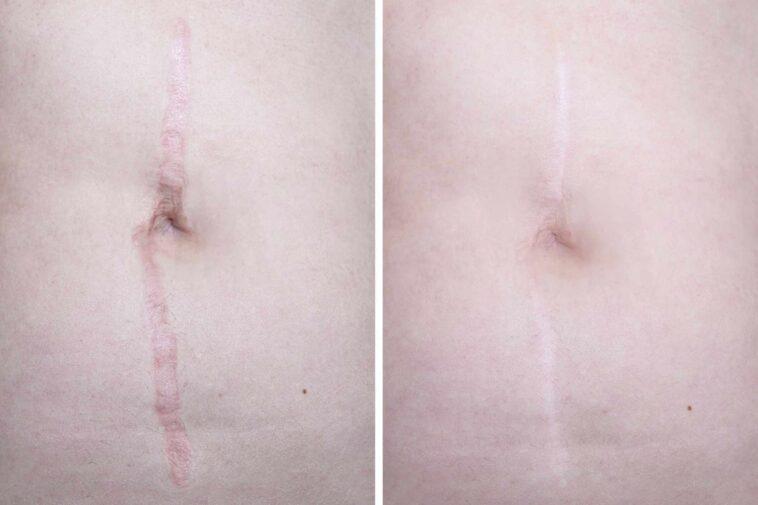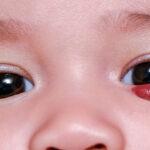Scar Revision – types, objectives, treatment and outlook
Surgery for Scar Revision
Surgery for Scar Correction
Introduction
We all have scars, whether from acne, falls, an accident, an operation, illnesses, etc. Keep in mind that over time, scars tend to look less but never completely disappear. For this reason, on some occasions, sure of them that are too large or in places that are too visible can cause discomfort or insecurity. Because of this, today, there are a wide variety of treatments to improve and camouflage them. In the most severe cases, surgery may also be an option.
The different types of scars
According to the professionals, they are of four types:
- Hypertrophic and Keloid: Hypertrophic scars occur when there is an excessive accumulation of dermal tissue with the growth of fibroblasts, elastin fibers, and collagen fibers. It is called a keloid scar when its extension is more significant in width and length than the wound that caused it.
- Atrophic: They appear when dermal collagen fibers break. They are usually caused by acne or chickenpox. Within the atrophic scars, we can also find stretch marks.
- Hyperpigmented: It usually occurs in dark skin when there is a superficial scar.
- Hypopigmented: In this type of scar, the skin does not produce melanin due to the trauma that caused it. They are usually seen more in dark skin.
Objectives of the treatment
According to the specialists, there are different types of treatments adapted according to the kind of scar. There are simpler topical treatments such as creams, ointments, or silicone patches to remove a scar. If these options are not viable, there are minimally invasive procedures such as CO2 laser, dermabrasion, or micro-pigmentation.
In the most severe cases, a surgical operation can be performed.
Whatever type of treatment is chosen will affect the colour, surface appearance, width, and depth of the scar.
Professionals affirm that medical treatments should only be considered when ten months have passed and the scar has stopped varying. Generally, the basic treatment for correction is the fractionated CO2 laser. In most cases, it is recommended to combine several treatments to obtain an optimal result. Below are details of the most used treatments.
- The fractionated CO2 laser: The laser will perform a skin level by abrasion (rejuvenation technique). It will be particularly effective for treating acne and chickenpox marks or hypertrophic scars. This technique is not recommended for matte or black skin.
- Radiofrequency: Radiofrequency is characterized by an electromagnetic wave that will heat the tissues to activate the skin’s collagen and elastin production. Often used to prevent aging, radiofrequency also has a beneficial effect on certain types of scars. It will take 6 to 8 sessions, one session per week, to obtain satisfactory results. Finally, it is important to note that radiofrequency is not suitable for the treatment of keloids.
- LED phototherapy: In phototherapy, the LED lights will resonate with the cells in the injured area. This resonance will stimulate the synthesis of collagen and elastin in the skin. The skin will regenerate, and the scar will be less visible. LED phototherapy is especially beneficial for acne marks, stretch marks, or even to activate the skin’s healing process. It will take 6 to 10 sessions to have a satisfactory result.
- Hyaluronic Acid Injections: The injections will be made directly into the scar. The filling effect of hyaluronic acid will fill the scar and make it almost invisible. This technique is recommended for acne or hollow scars (post-surgical or post-traumatic). The results will be visible 15 days after the injections and will last approximately 6 to 9 months.
- Micropigmentation: The specialist will be the one who will decide if the scar tissue is in a condition to be pigmented since 6 to 12 months must have passed to perform this treatment. You have to be especially careful with keloids or hypertrophic. The patient will not notice changes in the texture of the scar; it will only be camouflaged since the colour is matched with the pigment of the micropigmentation. The results will be seen when the redness and inflammation diminish, and it can take up to 30 days to be definitive since that is when the pigment is fixed, and the definitive colour is seen.
Surgery to correct scars
Sometimes the scars are so large or visible that they affect the person’s self-esteem. In these cases, surgery may be the best option since it manages to disguise them. It is essential that the scar is deflated, has a normal colour, and is soft, which can be seen after 12 to 18 months. Generally, surgery is performed under local anaesthesia, although general anaesthesia and hospital admission may be necessary if the area is very extensive. A small scar can be corrected in half an hour, but the procedure can take several hours if it is more complex.
If the scar is wide and does not have retraction, elevation, and is not keloid, the surgeon can open and close the skin. In this way, the healing process will begin again. If the scar is not so regular, the surgeon will opt for other techniques such as Z-plasty or W-plasty.
- Z-plasty: The direction of the scar is changed, so it becomes longer and more extensive. Although the scar becomes larger, the skin is more relaxed and, therefore, less noticeable.
- W-plasty: This technique is used to improve facial scars. Convert a long scar into smaller, consecutive ones so that they are more easily disguised.
How do I find my doctor?
It is essential to visit a specialist in aesthetic medicine and, more particularly, in the treatment of scars regarding aesthetic treatment. Also, it will be necessary to verify the skills and qualifications of the doctor.
If surgery is necessary, a plastic surgeon must perform the procedure and specialize in the correction of scars.
What happens during the first consultation?
In the first consultation, the professional will examine the scar and diagnose what treatment would be the most appropriate according to your needs and medical history. Once the procedure is chosen, the doctor will explain how it will be performed, the risks, and the price. According to the specialists, to schedule a treatment, we will always look at the type of scar it is, how old it is, the location, the extent, the age of the patient. All these factors will be decisive when it comes to the result.
In case a surgery is necessary, you will also have to explain how to prepare the days before the intervention, how the intervention will be performed, and what the postoperative will be.
How does the procedure work?
The procedure will depend on the chosen treatment. Given below is the detail of each one:
- Fractional CO2 laser session: The physician will configure the device to establish the depth and density of the ablation pixels. These settings are defined according to the injury and the area to be treated. The laser is then scanned on the surface to be treated, and at the end of the session, a cream is applied to soothe and hydrate the skin.
- Carrying out a radio frequency: The session begins with applying a glycerin gel to maintain a homogeneous heat throughout the area to be treated. The doctor will then sweep the area with an emission head to increase the external temperature to 39-42 ° C.
- Performing phototherapy: A phototherapy session is personalized. You can lie on your back or sit in front of the lamp with each session of about 30 minutes. The lamp setting will depend on the colour and treatment(acne, stretch marks, etc.). Wearing eye protection is highly recommended during the session.
- Hyaluronic acid injection: It is possible to apply an anaesthetic cream to the area to be treated 45 minutes before the session. The type of hyaluronic acid injected will depend on the area, location, and type of scar.
- Micropigmentation session: The specialist will apply hypoallergenic pigments directly to the epidermis to cover the skin with colour. It is necessary to do it 1 or 2 times a year since the result is not permanent. This technique must be carried out by an expert as this will avoid risks, and the results will be more optimal.
Postoperative / post-treatment
- After a fractional CO2 laser session: In the days after the laser session, the skin may be red and irritated, for which creams can be prescribed. The most common side effects are redness. In some cases, there may be superinfection, hyperpigmentation, or poor healing of the treated area.
- After a radiofrequency session: Radiofrequency is a non-invasive technique. It has no significant side effects, except for a slight redness that can appear in the minutes after the session.
- After a phototherapy session: Being non-invasive and completely painless, phototherapy has no side effects.
- After hyaluronic acid injections: Sometimes, slight swelling or bruising may appear at the injection site. The skin will return to a normal appearance within 2 to 3 days after the injections.
- After micro pigmentation: The patient should not scratch the treated area or remove the protective skin layer over the lesion that will form after the treatment. After a month, the patient will see the specialist again to determine if a touch-up is necessary.
- After surgery: In some cases, a bandage may be necessary that the patient must wear for a few days. The scar will have to heal with a specific ointment prescribed by the doctor. Generally, the stitches are removed after 15 days, and the final result can be observed after 12 months of intervention.
Results
Whatever treatment is chosen, there is a clear improvement in the skin at the end of the session or in the following days. The skin will be visibly smoother, and the scar will be less visible.
In the case of surgery, the results can take up to a year to be definitive, but the appearance of the scar will also be significantly improved.
In most cases, the attenuation of the scar will provide patients with an improvement in their self-esteem since if they undergo treatment, it is because they felt the need to eliminate it. Each scar is unique and will have a different treatment. It is important to clarify to the patient that the scars do not disappear completely, although, with treatments and the passage of time, they can be diluted.
Risks or contraindications
Although the percentage of complications in scar correction treatment is usually low, no surgical intervention or medical treatment is without risk.
In the case of surgery, the main complications include:
- Infections.
- Bleeding.
- Complications associated with anaesthesia.
- Recurrence of the scar in the form of a keloid scar.
Frequent questions
- Is it possible to treat a cesarean scar with adhesions? In a cesarean section scar, two solutions can be proposed: the pulsed dye laser if the scar is relatively recent and still red; the fractional CO2 laser if the scar is light in colour (mature scar). It will take several sessions, but you can get perfect results on this type of scar.
- Is there a treatment for hollow acne marks? A medical examination will be essential before any treatment. However, in the case of acne scars, mesotherapy and various techniques give very satisfactory results.
- What can be done on a keloid scar? As a general rule, delayed corticosteroid injection is the most commonly used method for keloid scars. The application of corrective care must accompany the injections, and the sun must be avoided.
- Can we erase the burn scars? Most of the time, several techniques will have to be combined to obtain an optimal result. For burn marks, a combination of mesotherapy and peeling is quite effective. Again, it will take several sessions, depending on the size and depth.
- How to erase a scar due to an old piercing? In this case, the mesolift can be an interesting solution because it will act on the scar while providing curative and preventive care against skin ageing.
- Scars on legs? Various procedures can be performed to improve the appearance of a scar, among which are the fractionated CO2 laser, peels, carboxytherapy, among others. The ideal is to assess yourself directly to recommend the treatment that best suits your needs.




GIPHY App Key not set. Please check settings